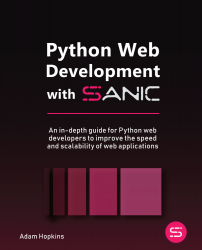Summary
Since we are past the point of talking about basic concepts in application development, we have graduated to the level of exploring some best practices that I have learned over the years of developing web applications. This is clearly just the tip of the iceberg, but they are some very important foundational practices that I encourage you to adopt. The examples from this chapter could become a great foundation for starting your next web application process.
First, we saw how you can use smart and repeatable exception handling to create a consistent and thoughtful experience for your users. Second, we explored the importance of creating a testable application, and some techniques to make it easily approachable. Third, we discussed implementing logging in both development and production environments, and how you could use those logs to easily debug and trace requests through your application. Finally, we spent time learning how databases could be integrated into your application...



